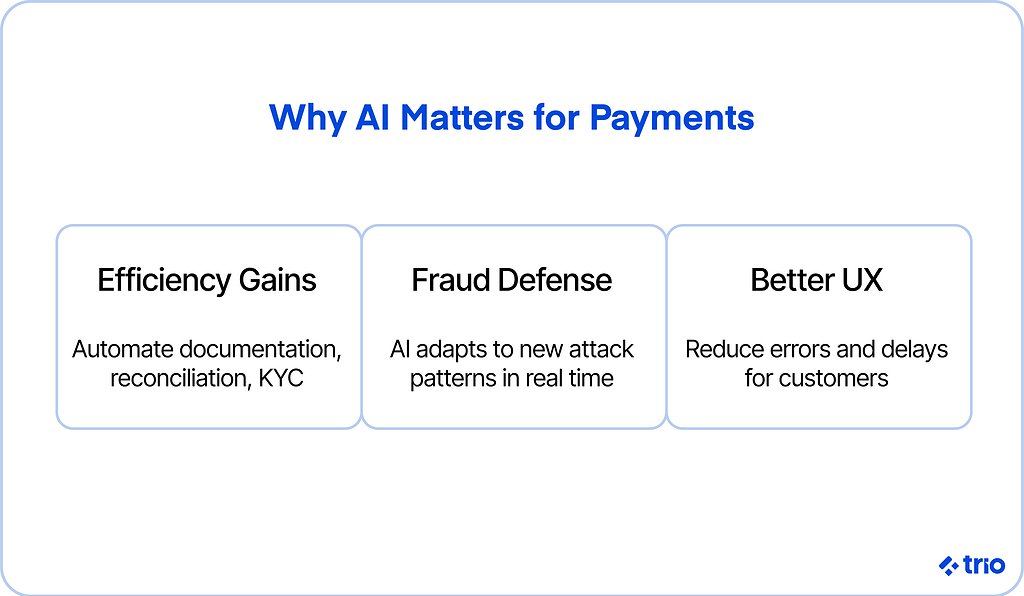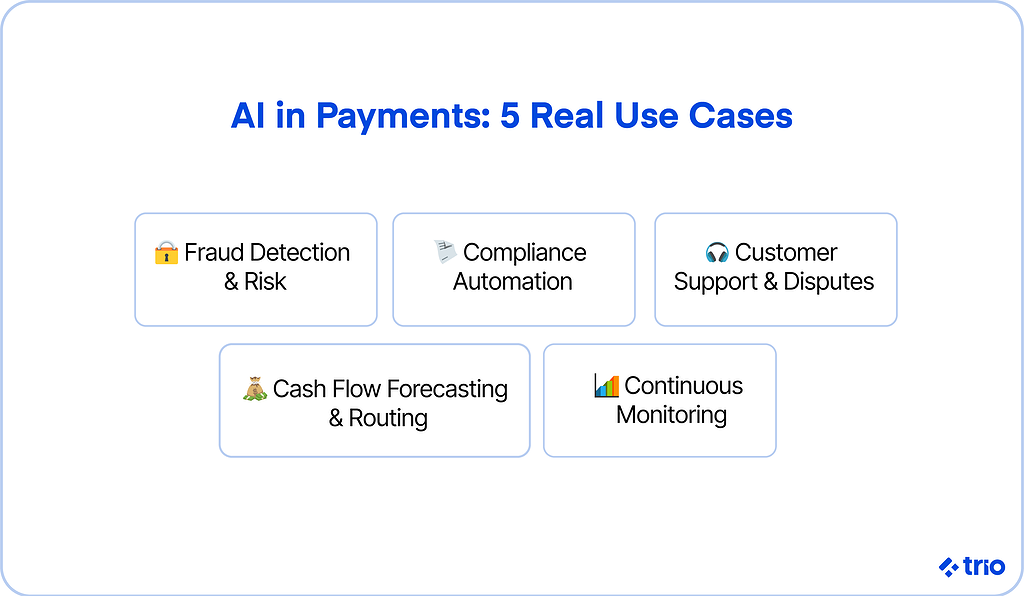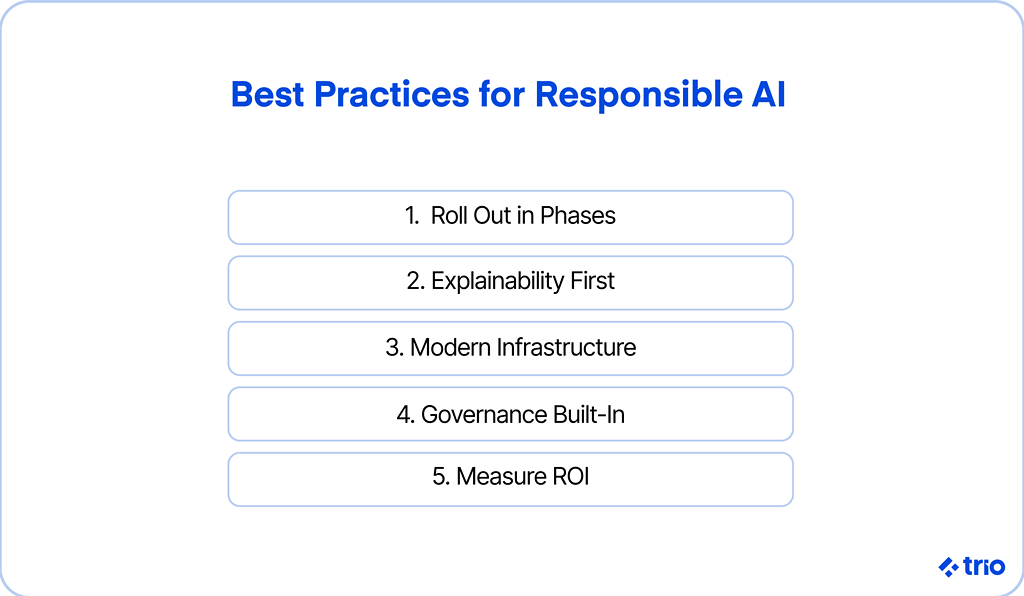Payments are under pressure. The rails keep multiplying, compliance rules get tighter, and customers expect speed with zero tolerance for friction.
Yet, most fintech teams are still struggling with aging payment infrastructure, layers of legacy code, brittle integrations, and manual processes that consume engineering hours.
You can move money, but every improvement feels like a patch rather than a step forward.
That situation becomes more painful as volumes grow.
Reconciliation, which once took an afternoon, now drags on for days. Fraud monitoring rules flag legitimate transactions and frustrate customers. Compliance reviews stall product launches.
The irony is that the more your business succeeds, the harder it becomes to keep the machine running smoothly.
This is where AI has begun to reshape the payments landscape.
Global banks are cutting documentation cycles from weeks to hours, fintechs are predicting liquidity gaps before they become crises, and support teams are automating dispute resolution so engineers can focus on new features instead of firefighting.
What matters now is not whether to adopt AI, but how to use it responsibly, modernizing payment infrastructure while maintaining a balance between compliance, cost, and reliability.
Let’s look into how AI is being applied in real payment contexts, from fraud detection to predictive routing, and what best practices fintech leaders can follow to avoid hype traps and build systems that scale.
If you need developers who understand the intricacies of using AI for payments modernization, you are in the right place. As a staff augmentation and outsourcing firm, we have curated the top 1% of applicants, placing our fintech experts based on their past experience on similar projects.
This careful placement of our expert developers has created a 97% placement success rate.
Why AI Matters for Payments Modernization
Modernizing payments has always been about speed and scale.
However, speed alone no longer solves the real bottlenecks.
What’s changing is that AI brings a different kind of capability, systems that not only move money faster but also interpret, predict, and respond in real-time as transactions occur.

More than efficiency gains
For many fintech teams, the immediate draw is automation.
Tasks like documentation, reconciliation, or know-your-customer checks consume thousands of hours and tie up skilled engineers.
AI can take over large parts of this work, reducing time and cost in ways that were nearly impossible with traditional rule-based tools.
Stronger defenses against fraud
Fraud has become too complex for static detection rules.
Criminals shift patterns quickly, and manual monitoring can’t keep up. AI models, especially when layered in multi-agent setups, identify subtle anomalies in real time and adjust as new tactics appear.
The payoff isn’t just fewer false positives but a system that feels less brittle and more adaptive.
Smarter experiences for users
Payments may seem like a back-office problem, but delays and errors hit the end user directly.
AI enables personalized payment flows, anticipating issues before they trigger support tickets and nudging users toward the smoothest path.
Done well, this creates experiences that customers barely notice, which is often the highest compliment in payments.
Built-in regulatory alignment
The push toward ISO 20022 and similar standards means more structured data is available than ever before. AI thrives on structured data.
Combined with monitoring tools, it can highlight compliance risks, automate reporting, and flag anomalies that auditors will eventually ask about anyway.
Instead of scrambling to stay aligned, teams can treat compliance as a continuous process embedded into their systems.
Top AI Use Cases in Payments
Before diving into best practices, it helps to look at where AI is already delivering value in payments today.
These aren’t futuristic ideas; they’re the areas where fintech teams are actively experimenting and seeing results.

Fraud Detection and Risk Management
Fraud remains the number one reason most payment leaders first explore AI.
Rule-based systems were fine when transaction patterns were predictable, but they break down once bad actors learn the rules and adjust faster than teams can update them.
AI models add flexibility: they can watch for subtle shifts in behavior, like a user who suddenly changes device, location, and purchase size within minutes, that would slip through static filters.
The techniques are varied. Some fintechs are training anomaly detection models on live transaction streams, essentially giving them a “sixth sense” for what looks off.
Others rely on behavioral biometrics: keystroke patterns, swipe speeds, or how a user holds a phone. More advanced setups layer multiple models together, sometimes orchestrated by agent-based systems, so one model handles transaction history while another focuses on device risk or geolocation.
What’s striking isn’t just the accuracy gains. It’s the ability to cut down false positives that frustrates legitimate customers.
A fintech might discover that by shifting from static rules to AI-driven scoring, they approve thousands of additional transactions each week without increasing fraud losses.
That’s not only safer, it’s also a competitive edge in user experience.
Document and Compliance Automation
If fraud is the most urgent problem, documentation is the most draining.
Every new customer, every regulatory change, every compliance audit generates piles of paperwork that usually land on operations or engineering teams. AI is shifting that burden.
Instead of manually compiling KYC files or preparing regulatory submissions, teams are experimenting with multi-agent orchestration.
One agent drafts the document, another checks it against requirements, and a third validates data sources before anything gets submitted. What once dragged on for weeks can shrink to a few hours.
It’s not just about speed; the consistency reduces the risk of human error that regulators are quick to spot.
The real opportunity here is scale. As fintechs expand into new regions or product lines, documentation volume multiplies.
AI doesn’t get slower as the workload grows, which makes automation the only realistic way to keep pace without ballooning headcount.
Customer Support and Dispute Resolution
Support teams know that the bulk of inquiries are repetitive. “Where’s my payment?” “Why was this transaction declined?” “Can I reverse this charge?”
AI-powered chat and voice agents can now handle most of these questions instantly, while routing only the messy edge cases to human staff.
The value isn’t just shorter wait times. It’s also consistent; customers receive the same clear, accurate answers whether they ask at 2 p.m. or 2 a.m.
In some fintechs, AI copilots are being built directly into dispute resolution workflows, pulling transaction histories, flagging potential chargeback evidence, and preparing case files so a human only needs to review and submit.
The result is fewer bottlenecks, happier customers, and engineers who aren’t dragged into support escalations they were never hired for.
Predictive Cash Flow and Routing
Modern payment systems don’t just move money; they decide how to move it.
Routing a transaction through FedNow instead of RTP, or across SEPA instead of SWIFT, can mean differences in cost, settlement speed, and even regulatory exposure. AI helps teams make these choices in real time.
By analyzing both transaction history and macroeconomic data, AI models can forecast cash flow gaps before they become problems.
A fintech might see that payroll and supplier payouts will create a liquidity crunch next Friday, and pre-emptively reroute funds or adjust settlement timing to keep accounts balanced.
Routing decisions can also be optimized continuously.
Instead of fixed rules (like using Rail X for all domestic transfers), AI systems weigh cost, speed, and reliability on the fly.
Done well, this reduces operational drag and gives end users a smoother, more predictable experience.
Continuous Compliance and Monitoring
Compliance has traditionally been reactive, detecting suspicious activity after the fact. AI shifts this dynamic toward continuous oversight.
Models can scan live transaction streams for AML red flags, sanctions violations, or unusual flows that might indicate money laundering networks.
The link to ISO 20022 is crucial.
With richer structured data flowing through payment systems, AI has more signals to learn from and can build a more complete picture of risk.
Some teams are even using AI to generate real-time compliance dashboards that alert human reviewers to anomalies before they become reportable incidents.
The upside is twofold: fewer regulatory surprises and a stronger ability to demonstrate controls when auditors arrive. For fintechs hoping to scale quickly, that assurance is almost as valuable as the speed gains.
Best Practices for Responsible AI Adoption
Adopting AI in payments isn’t just a matter of plugging in a model.
These systems will eventually make decisions that affect compliance, customer trust, and revenue flow. Treating AI like an experiment or side project is a fast way to create more problems than you solve.
What follows are practices that fintech teams have found helpful to make AI both effective and safe.

Roll Out in Phases
The temptation is to switch AI on everywhere at once.
A safer path is phased rollouts. Many teams start by running models alongside existing systems and comparing outputs.
If a fraud model consistently spots issues faster than your current rules, that’s evidence to increase its autonomy. This gradual approach helps catch failure modes before they spill into production.
Make Explainability Non-Negotiable
Regulators, and increasingly customers, want to know why a decision was made.
Fintechs are finding value in interpretable models or in adding explainability layers that trace decision logic.
It may feel slower than deploying a black-box model, but it pays off when auditors or risk teams ask tough questions.
Integrate with Modern Infrastructure
An AI system is only as good as the stack it runs on. Models that require batch jobs or brittle integrations won’t hold up in real-time payment flows.
AI works best in API-first, cloud-native environments where microservices can scale up and down with demand. If your current stack isn’t there yet, modernization may need to happen in parallel with AI adoption.
Embed Governance from the Start
AI used in payments should be treated as a regulated component, not a lab project.
That means building in monitoring dashboards, bias testing, and human-in-the-loop checkpoints from day one.
Skipping these steps usually leads to painful retrofits later, when regulators or partners demand controls you don’t have.
Measure ROI With Real Metrics
AI should earn its place. Whether that’s fewer false positives in fraud detection, hours saved in documentation, or faster dispute resolution, teams need clear benchmarks.
Without them, it’s too easy for projects to become vanity initiatives. ROI measurement also helps decide which use cases to scale and which to sunset.
Strategic Opportunities for Fintechs
AI in payments isn’t only about plugging compliance gaps or keeping fraud under control.
Where things get interesting is in how AI can open doors to entirely new products, sharper cost advantages, and differentiation in a crowded market.
Unlocking New Products
The same models that scan transactions for fraud can also be tuned to assess creditworthiness or predict spending patterns.
That opens paths to AI-driven credit products, embedded finance offerings, or cross-border solutions that adapt to local conditions in real time.
For fintechs under pressure to expand product lines quickly, AI can shorten the gap between idea and launch.
Driving Cost Leadership
Payments is a volume game, and margins are thin.
Automation through AI can strip out operational overhead that scales linearly with transaction volume, manual reconciliations, repeated compliance checks, and dispute escalations.
Cutting those costs not only improves margins but also gives smaller fintechs breathing room to compete with larger incumbents.
Standing Out in the Market
The payments space is noisy. Many providers claim that their services are fast, secure, and reliable, but few can actually show how they deliver something measurably better.
A fintech that offers smoother fraud checks, near-instant disputes, or predictive cash flow tools gives customers tangible reasons to switch.
AI can be the lever for that differentiation, provided it’s implemented with care and transparency.
Looking Ahead: The Next Frontier of AI in Payments
What feels cutting-edge today may soon be table stakes. A few developments are already shaping what the next five years of AI in payments could look like.
One of the most important is the shift toward agentic payments, where AI agents can initiate and complete transactions without direct human input.
Google’s proposed AP2 protocol is an early sign of where this is heading: a framework designed to ensure mandates, accountability, and verification when agents act on behalf of people or businesses.
For fintechs, this may sound futuristic, but the groundwork needs to be laid now.
Preparing for agent-driven transactions means thinking about auditability, security layers, and fail-safes long before the first customer ever delegates payments to an AI.
Another area to watch is the intersection of payments with programmable money, stablecoins, CBDCs, and rails that support smart contracts.
These instruments may expand what settlement means, blending traditional payment flows with conditions and triggers that execute automatically.
AI becomes the decision engine in that environment, orchestrating not just how money moves but under what circumstances.
And then there’s the uncomfortable truth: today’s modern systems can easily become tomorrow’s legacy.
The pace of change suggests that modernization isn’t a one-off project but an ongoing discipline.
Fintechs that view AI adoption as iterative, constantly evaluating models, infrastructure, and protocols, will be better positioned to adapt when the next shift arrives.
Conclusion
AI in payments is no longer a theoretical advantage; it’s a practical necessity.
For fintechs of all sizes, the question is less about whether to use it and more about how to integrate it responsibly, balancing speed and automation with compliance, explainability, and customer trust.
The payoff is significant. Stronger fraud defenses, faster documentation, smoother support, and more intelligent routing can transform operations from reactive firefighting to proactive growth.
But success depends on strategy: phased rollouts, transparent systems, and governance that treats AI as part of the regulated backbone of payments, not an optional add-on.
If you’re leading a fintech through this transition, the opportunity is clear. AI can streamline the work that slows you down today and open doors to new products tomorrow.
The sooner you build with these principles in mind, the easier it becomes to stay ahead of both competitors and regulators.
Ready to start your own AI-powered payments modernization journey with expert fintech developers who you know you can trust? Get in touch.
FAQs
How is AI used in payment modernization?
AI in payment modernization is used to automate compliance, detect fraud in real time, optimize routing, and improve customer support.
Why is AI important for payments?
AI is important for payments because it moves beyond speed, adding intelligence that reduces risk, cuts costs, and personalizes user experiences.
What are the risks of using AI in payments?
The risks of using AI in payments include regulatory non-compliance, model drift, bias in decision-making, and customer trust issues.
How can fintechs adopt AI responsibly?
Fintechs can adopt AI responsibly by rolling out in phases, embedding explainability, treating AI as a regulated system, and tracking ROI.
What future trends will shape AI in payments?
Future trends in AI for payments include agent-driven transactions via AP2, programmable money, and continuous modernization cycles.






